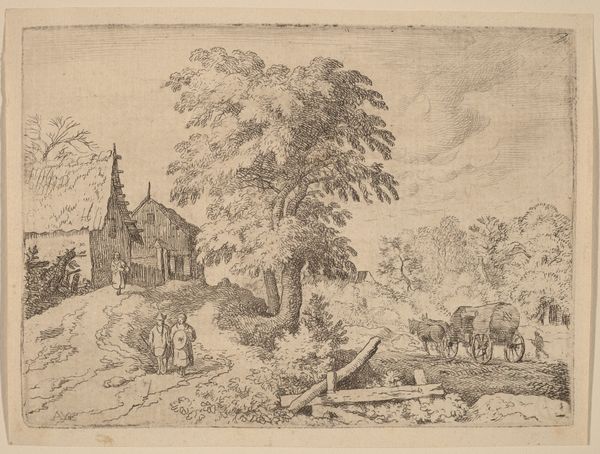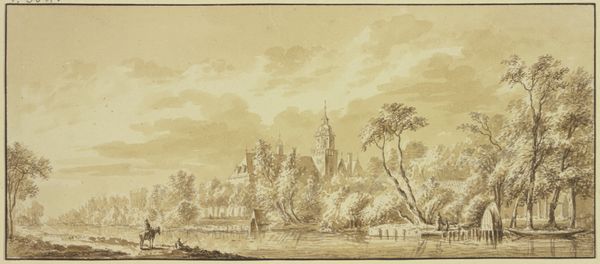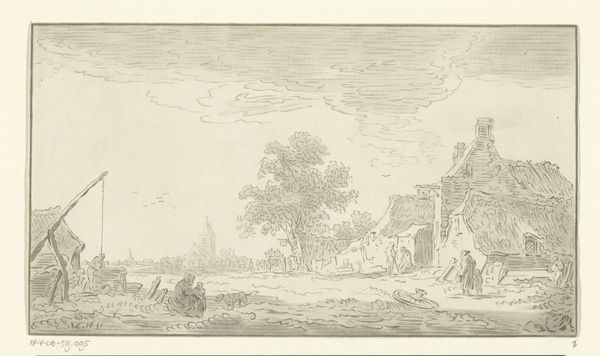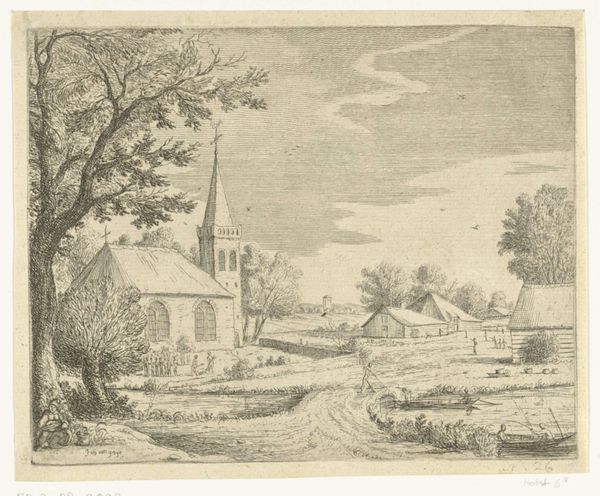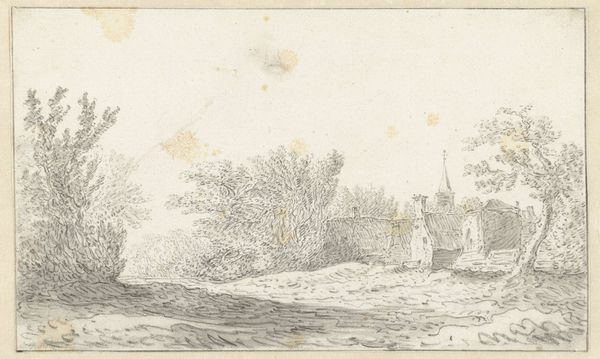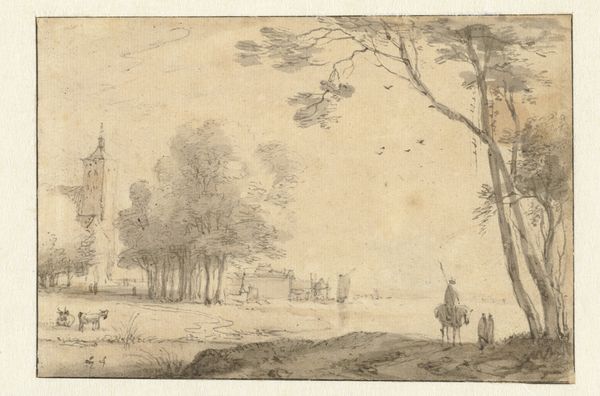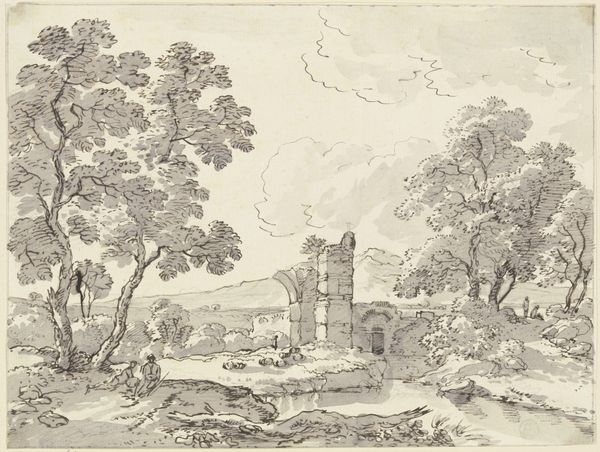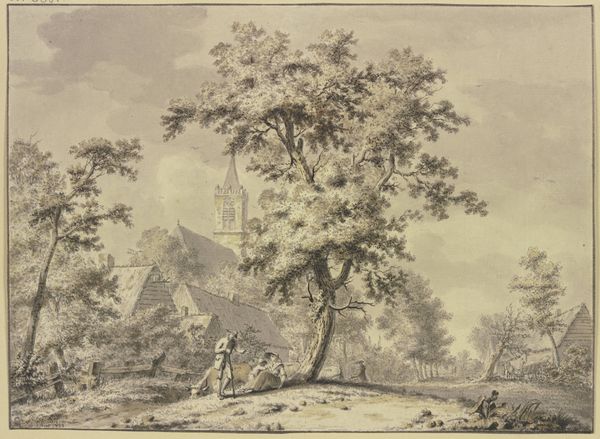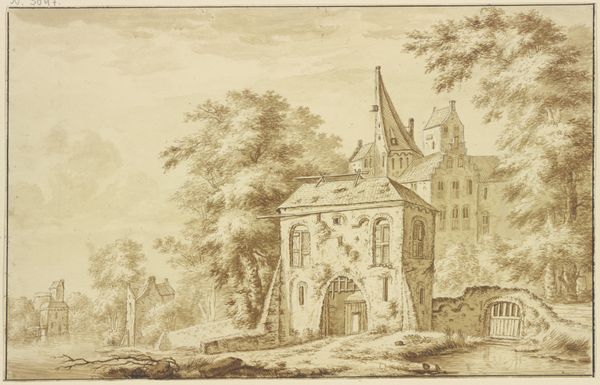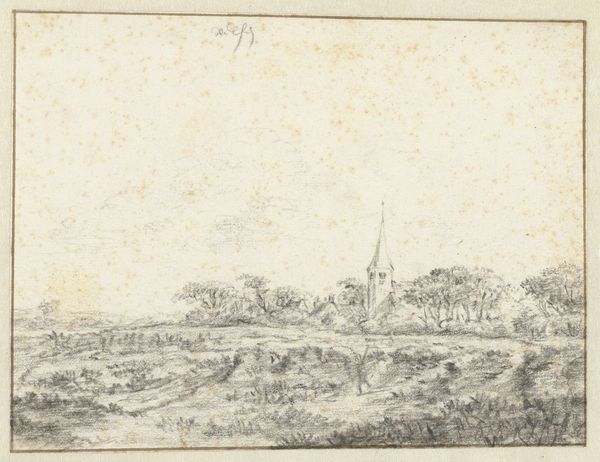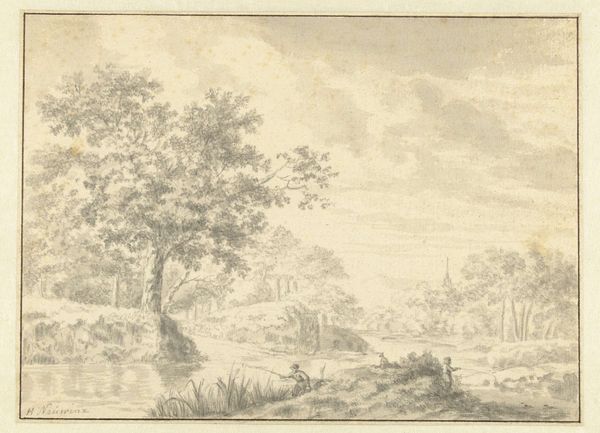
Dorpsgezicht, in het midden een kerktoren met een hoge spits 1650 - 1660
0:00
0:00
pieterdemolijn
Rijksmuseum
drawing, pencil, pen
#
drawing
#
dutch-golden-age
#
pencil sketch
#
landscape
#
pencil
#
pen
Dimensions: height 136 mm, width 197 mm
Copyright: Rijks Museum: Open Domain
Curator: Up next, we have a Dutch Golden Age landscape, a quick sketch actually, called "Dorpsgezicht, in het midden een kerktoren met een hoge spits," which translates to "Village View, with a church tower with a high spire in the middle". It’s from sometime between 1650 and 1660 and attributed to Pieter de Molijn. Editor: Mmm, gray, scratchy, and…unassuming? It looks like a half-remembered dream of a village, like a fleeting moment caught in pencil. I’m immediately drawn to how skeletal everything appears, as if the very bones of the village are showing. Curator: Exactly! The immediacy of the drawing, rendered with pen and pencil, lends that very feeling. Think about it – the use of drawing as a primary means of artistic expression… it reflects a burgeoning market for landscapes beyond commissioned paintings. De Molijn captured a scene, maybe quickly, that could be reproduced and sold. Editor: Yes, I imagine those pens were busy little instruments in that era. Look at the roof texture – he gets that quickly by making a series of curving, almost parallel strokes that are just close enough to capture the depth of a thatch roof. The materiality of the drawing, and its reproducibility point to something new. Who owned these images? Curator: That's the point. The market had expanded – we can think about these smaller drawings and prints being acquired by a wider audience beyond the wealthiest patrons. Here you can see that art enters the homes of a growing merchant class who decorated their walls. These detailed observations reflect a kind of budding naturalism—a genuine curiosity about the ordinary. It is like holding a whisper of a time long gone, and its soft tonality encourages contemplation and gentle wonder. Editor: I completely agree. Even the slightly aged paper adds a tangible, historical quality, deepening that connection to the past. Thinking of the materials he used – paper, pencil, ink, easily transportable, widely accessible… they allowed him to capture this moment swiftly and relatively inexpensively. The church is the obvious focus, but also this village landscape, its materials of roofs and walls and wooden piles are elevated and observed. This is about recording and disseminating place and craft. Curator: It is beautiful how the quickness does not reduce, but enlivens the view. It reminds us that even sketches are never just outlines but whispers of something much grander, which allows our own imaginations to breathe. Editor: True, there is a certain power held by the work, isn't there? A very physical manifestation of craft and consumption which we can look upon hundreds of years later and imagine its creation.
Comments
No comments
Be the first to comment and join the conversation on the ultimate creative platform.
